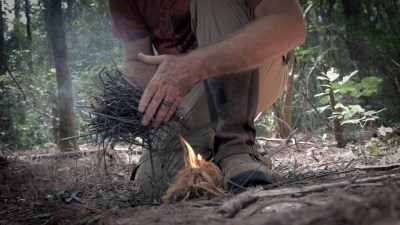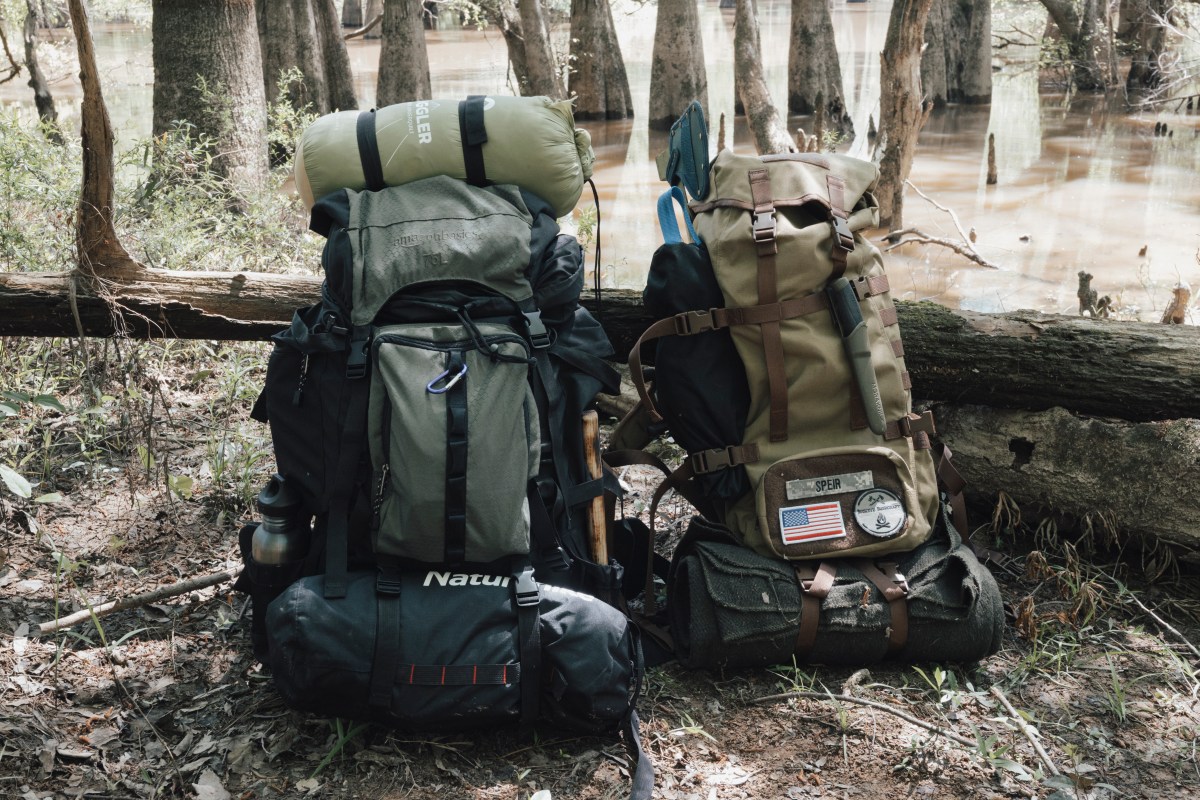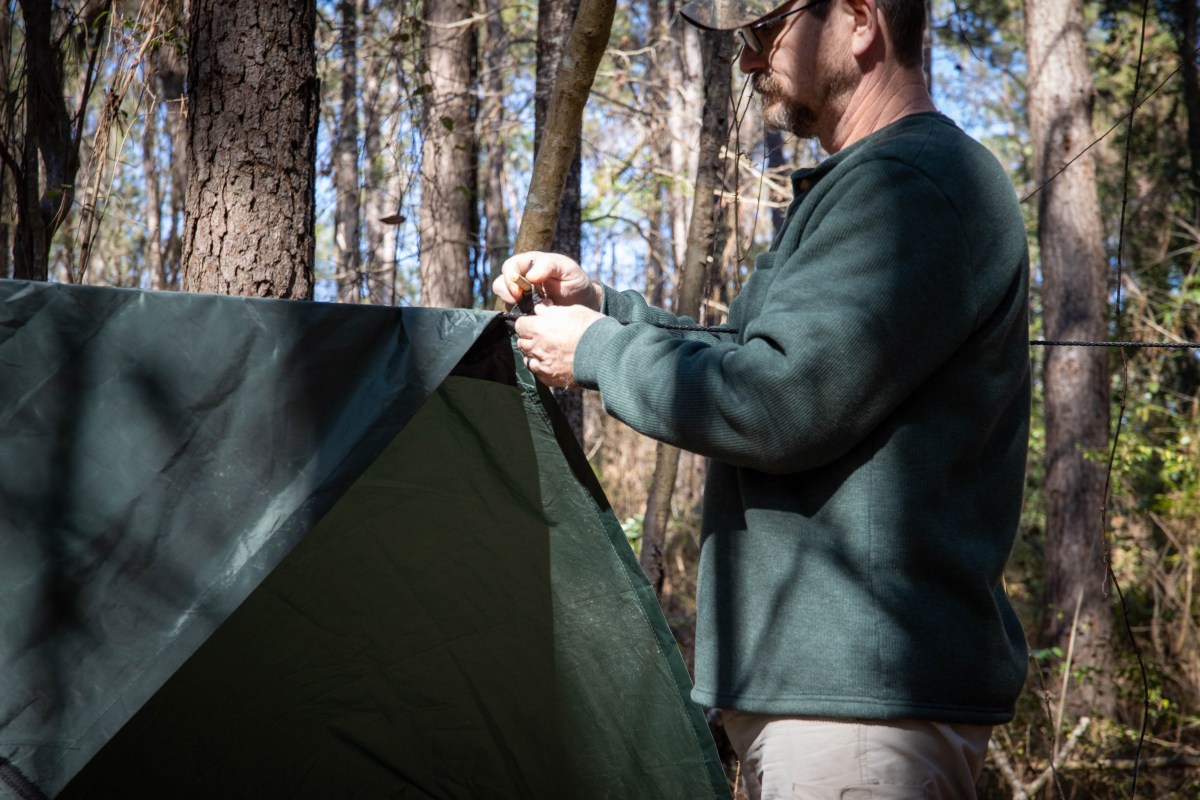
Fire, a primal force intertwined with humanity’s story, is deeply rooted in history. It goes beyond merely providing heat and light. This elemental power transformed early human life, enabling survival in challenging environments and laying the foundation for our civilization. As we explore the “Fire Triangle in Primitive Camping,” this guide delves into the remarkable impact of fire. From its essential role in conquering nature’s obstacles to fostering social development and driving technological progress, we’ll uncover the profound significance of understanding fire in its most basic and raw form during primitive camping experiences.

The Role of Fire in Survival and Exploration
The discovery and mastery of fire stand as monumental achievements in human history. Fire empowered our ancestors to venture into inhospitable territories, adapt to colder climates, deter predators, and extend their activities into the night. Giving them the ability to control fire fundamentally altered early human lifestyles and set the stage for their resilience and expansion.
Fostering Social Development Through Fire
Fire played a pivotal role in shaping social dynamics and communal development. Its mesmerizing flames acted as a gathering point, drawing people together and fostering social interaction. The warmth and security offered by fire encouraged collaboration, storytelling, and knowledge exchange, laying the groundwork for stronger social bonds and tighter-knit communities.
Revolutionizing Culinary Practices and Sparking Technological Advances
Apart from its significance for survival and social cohesion, fire revolutionized food preparation and sparked technological advancements. Cooking over an open flame transformed raw ingredients, making them safer to consume and easier to digest.
Moreover, fire served as a catalyst for innovation. The controlled application of fire gave rise to various crafts, such as pottery and metalworking. By harnessing fire’s heat, early humans were able to mold clay and shape metals, paving the way for the creation of sophisticated tools, weapons, and vessels. These technological leaps propelled human progress, laying the foundation for future advancements.
Recognizing Fire’s Historical Significance
The historical significance of fire cannot be overstated. From its role in enabling survival in harsh environments to fostering social cohesion and driving technological breakthroughs, fire has left an indelible mark on human civilization.

Understanding Fire’s Fundamental Principles: A Deep Dive into Its Chemistry
Unveiling the Chemistry of Fire: The Process of Oxidation
At its core, fire’s chemistry revolves around the concept of oxidation, akin to the gradual rusting of metal but transpiring at an accelerated pace. When a material ignites, its molecules engage in a transformative dance with oxygen. This dance leads to the breakdown of the original substance, accompanied by the formation of new compounds, such as carbon dioxide and water vapor. The release of energy during this process takes the form of heat and light, creating the enchanting display we perceive as fire.
Fuel: The Catalyst for Combustion
A fuel source is essential for any fire to occur as it serves as the catalyst for the combustion process. Fuels can vary greatly, ranging from traditional sources like wood and paper to more modern forms such as gasoline and natural gas. What these materials have in common is their ability to undergo chemical reactions when exposed to heat and an oxidizer. The fuel’s nature dictates the fire’s characteristics, including its color, intensity, and behavior.
Oxidizer: The Crucial Role of Oxygen
Oxygen, the most prevalent component in our air, is the primary oxidizer in the combustion process. Its presence is vital for the sustained existence of fire. When oxygen molecules encounter the fuel at an elevated temperature, they eagerly participate in the reaction, combining with the fuel’s molecules to produce heat and light. The availability of oxygen significantly influences the speed and intensity of the fire, as well as the completeness of the combustion process.
Heat: Initiating the Flame
Heat, the third indispensable element in the fire triangle, initiates and sustains the chemical reaction. It provides the activation energy necessary to break the bonds within the fuel molecules, enabling them to react with oxygen. Once the initial heat source ignites the fuel, the resulting exothermic reaction releases additional heat, creating a self-sustaining cycle. The heat generated further supports the oxidation process, ensuring the perpetuation of the fire until one or more components become depleted.

Mastering Fire: Understanding the Fire Triangle in Primitive Camping
As humans, our ancestral connection with fire runs deep. Understanding its fundamental principles is essential for various activities, including primitive camping. At the core of fire’s ignition lies the concept of the fire triangle. This simple model illustrates the three indispensable elements required for fire to exist: heat, fuel, and an oxidizing agent, typically oxygen. In the context of primitive camping, comprehending the dynamics of the fire triangle is crucial for successfully starting and managing campfires. This guide explores the significance of the fire triangle in the context of primitive camping, shedding light on the interplay between its elements.
Heat: Igniting the Flames of Warmth and Comfort
In the realm of primitive camping, heat serves as the catalyst for fire. Heat is essential to elevate the material to its ignition temperature. It can be generated through various means, such as friction-based methods like using a bow drill or fire plow or with the aid of fire-starting tools like matches or lighters. Understanding how to harness and control heat is crucial when establishing a campfire, ensuring a sustainable source of warmth and comfort throughout the camping experience.
Fuel: Sustaining the Primitive Campfire
Fuel, the combustible material, is vital in sustaining a campfire. In the context of primitive camping, the choice of fuel can significantly impact the longevity and intensity of the fire. Materials such as dry wood, twigs, and leaves are excellent fuel sources due to their flammability. Prioritizing dry fuel is crucial to facilitate efficient burning and reduce smoke production. As responsible campers, it is important to gather firewood from sustainable sources, respect the natural environment, and adhere to any regulations or restrictions in place.
Oxygen: The Breath of Life for a Campfire
Oxygen, the third element of the fire triangle, supports the combustion process. In primitive camping, ensuring an adequate oxygen supply is crucial for maintaining a healthy and sustainable campfire. Proper ventilation and airflow are essential factors to consider when positioning the fire and arranging the fuel. Sufficient oxygen promotes complete combustion, producing a cleaner and more efficient fire. However, it is essential to exercise caution to avoid excessive wind that could cause the fire to spread uncontrollably.
Balancing the Fire Triangle
To establish and maintain a campfire during primitive camping, it is crucial to achieve a delicate balance between the elements of the fire triangle. Striking the right mixture of heat, fuel, and oxygen is key to a sustainable and safe fire. Monitoring and adjusting these elements as needed throughout the camping experience is essential. Adding more fuel when the fire weakens, adjusting the airflow to optimize the oxygen supply, and maintaining a safe distance from combustible materials are practices that ensure the longevity and safety of the campfire.

Navigating the Stages of Fire for Safe Primitive Camping
Fire, an elemental force that mesmerizes and warms us, undergoes a distinct progression of stages during primitive camping. Familiarity with incipient, growth, fully developed, and decay stages is crucial for effective fire management and ensuring a safe camping experience. By understanding how fire evolves, campers can make informed decisions, practice responsible fire handling, and mitigate potential risks. This guide explores the stages of fire in the context of primitive camping, highlighting their characteristics and emphasizing their significance for fire safety.
Incipient Stage: Igniting the Flame
The incipient stage marks the initial phase of a campfire. It begins when a heat source, such as a match or fire starter, comes into contact with a fuel source, such as dry tinder or small twigs. At this stage, the fire is small and manageable, with gentle flames slowly engulfing the fuel. Campers must exercise caution during ignition, ensuring the fire starts in a designated and safe area away from flammable materials.
Growth Stage: Fueling the Fire
As the fire progresses into the growth stage, it gains momentum and expands in size. More fuel is added to the fire, such as larger sticks and logs, intensifying the flames and increasing the heat output. This stage requires careful attention, as the fire’s behavior becomes more energetic and the heat radiates more intensely. Campers should regularly add fuel to sustain the fire but ensure they maintain control over its size and prevent it from spreading beyond the designated fire pit.
Fully Developed Stage: The Campfire’s Prime
The fully developed stage represents the campfire at its peak. It has consumed available fuel and reached a state of stability, producing steady and robust flames. The fire burns hot and bright, providing warmth, light, and a focal point for camp activities. Campers should maintain a safe distance from the fire at this stage, exercise caution when adding additional fuel, and have water or extinguishing materials readily available for emergencies.
Decay Stage: Embers and Cooling
The decay stage marks the gradual waning of the campfire. The flames recede as the available fuel diminishes, and the fire transitions into a bed of glowing embers. The fire’s intensity decreases, and the heat output subsides. During this stage, campers should allow the fire to naturally cool down, ensuring that all remaining fuel is fully extinguished and the campfire is safe to leave unattended. It is essential to adhere to proper fire safety practices. Never leave a campfire unattended until it is completely extinguished.
Mastering Fire: Embracing its Power and Responsibility
Fire is a complex and awe-inspiring phenomenon that has shaped human history and continues to impact our daily lives. Understanding the historical significance of fire reminds us of its integral role in our development as a species. Grasping the chemistry of fire allows us to appreciate the intricate processes underlying its ignition and combustion. Recognizing the stages of fire empowers us to effectively manage fires, practice responsible fire handling, and prioritize safety.
Whether using fire for cooking during primitive camping, creating warmth on cold nights, or marveling at the mesmerizing flames. We must approach fire with respect and mindfulness. By practicing caution and adhering to fire safety, we can harness the power of fire while minimizing risks.
As we move forward, let us continue to learn, adapt, and apply our understanding of fire. By doing so, we can embrace fire’s benefits. While ensuring the safety and well-being of ourselves, others, and the world around us.

Looking for More Wilderness Wisdom?
My book, “Primitive Camping & Bushcraft: A Step-by-Step Guide to Thriving in the Great Outdoors,” is your gateway to mastering the wild. Bursting with practical advice and real-life insights, it’s an essential read for every outdoor enthusiast. Secure your copy now at https://amzn.to/3QwgVLD and unlock the art of primitive camping.
When embarking on a primitive camping journey, having the right gear can significantly enhance your experience. From essential cutting tools like knives, saws, and axes to other must-have items such as shelter, cooking equipment, and navigation tools, being properly equipped ensures you’re prepared for any challenge nature presents. Explore recommended gear for primitive camping to make the most of your outdoor adventure.












